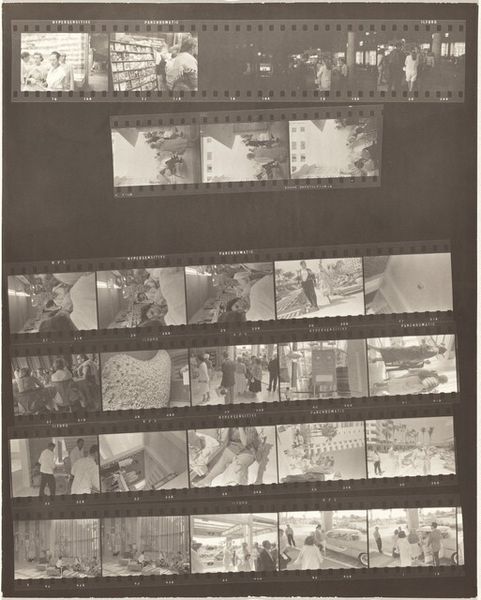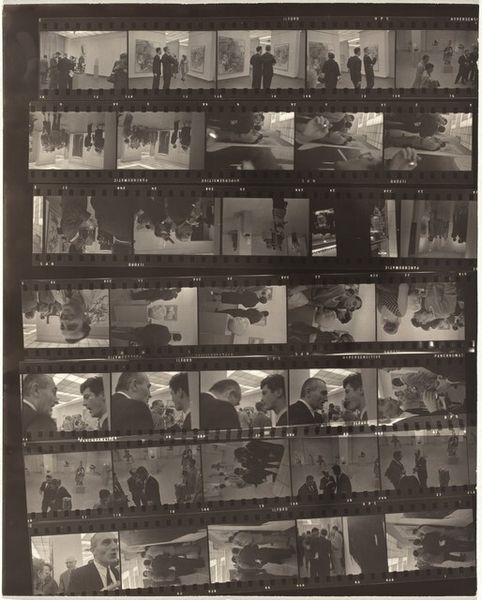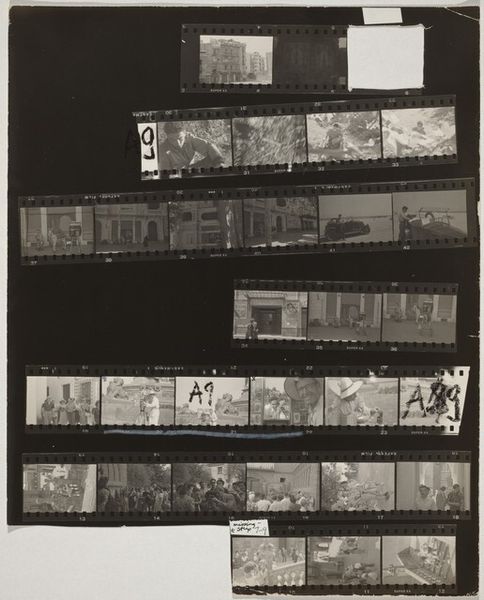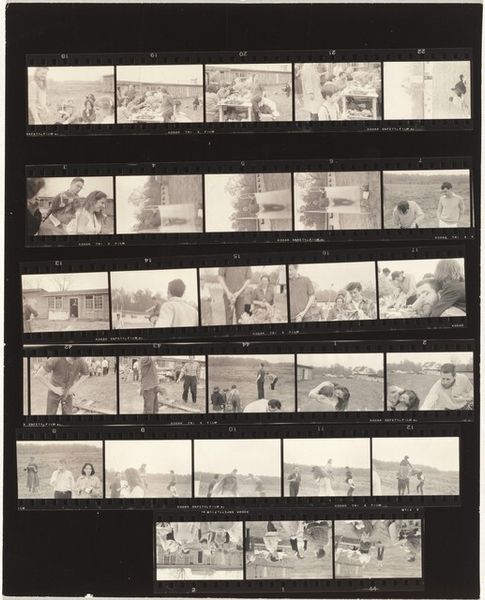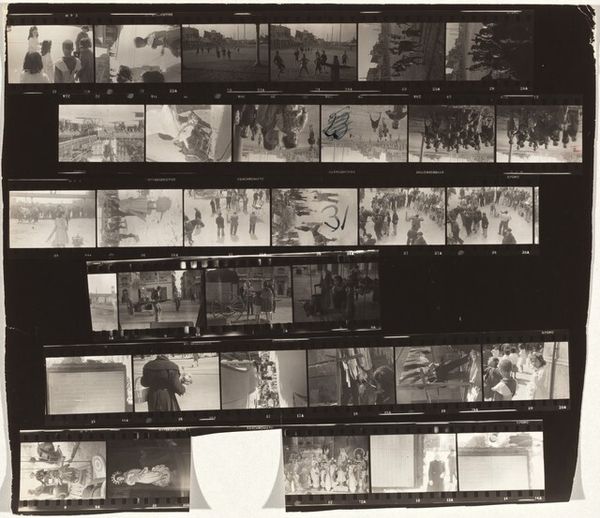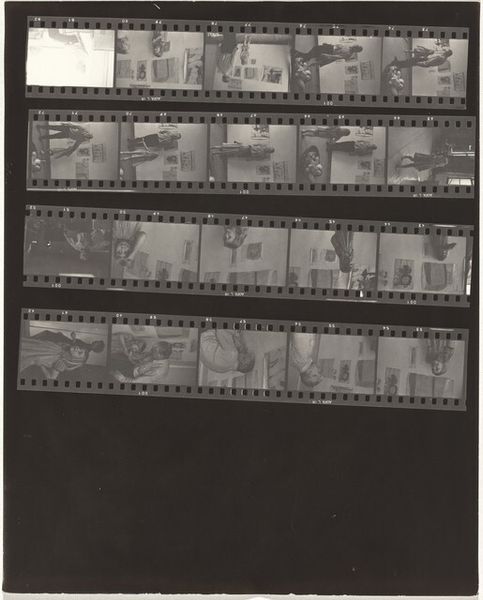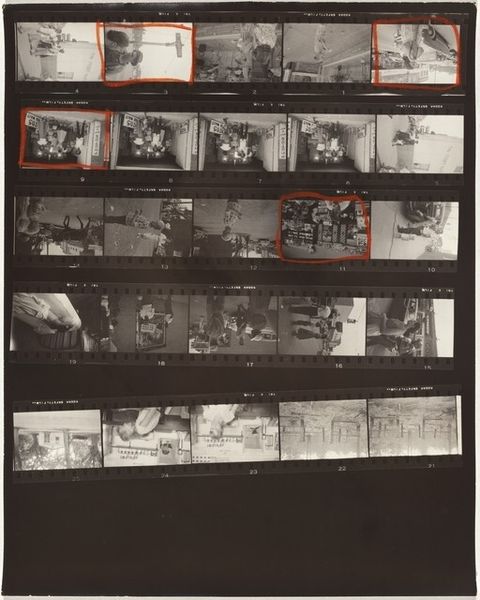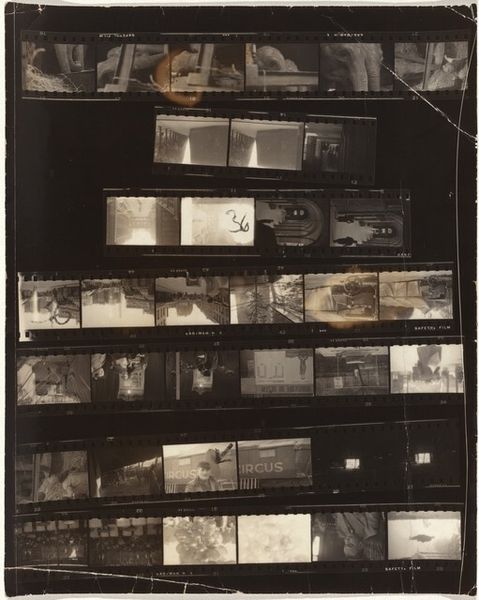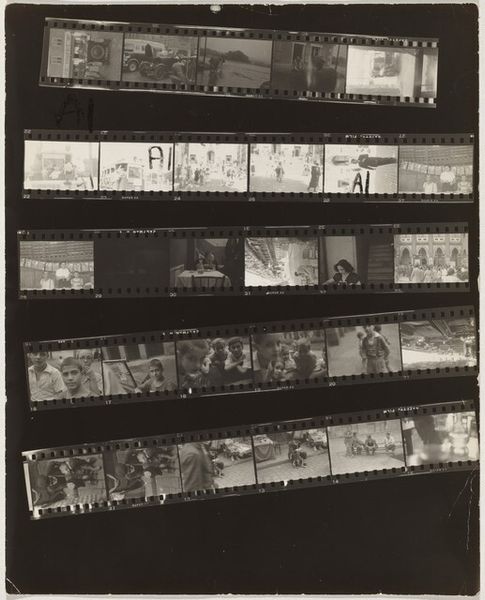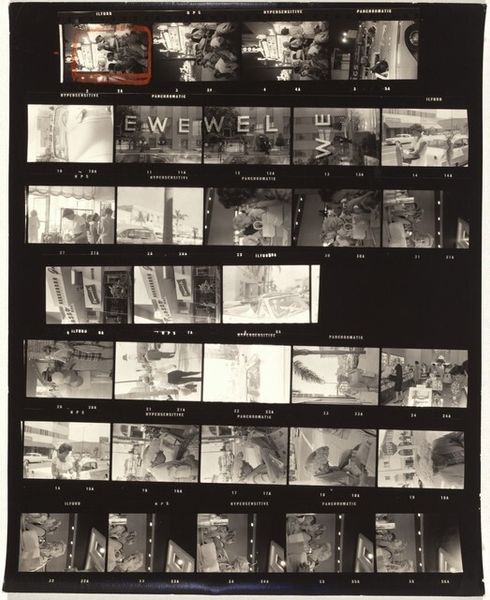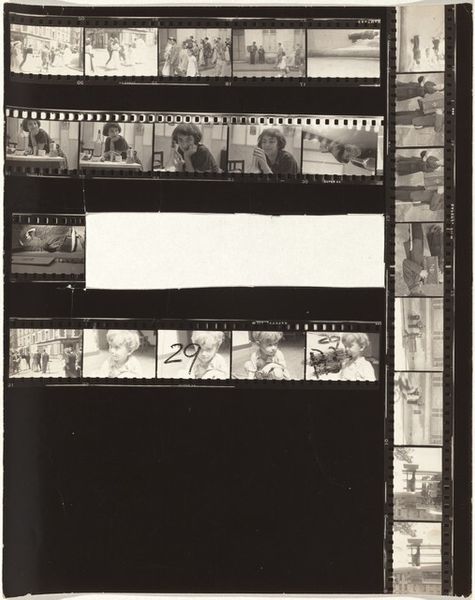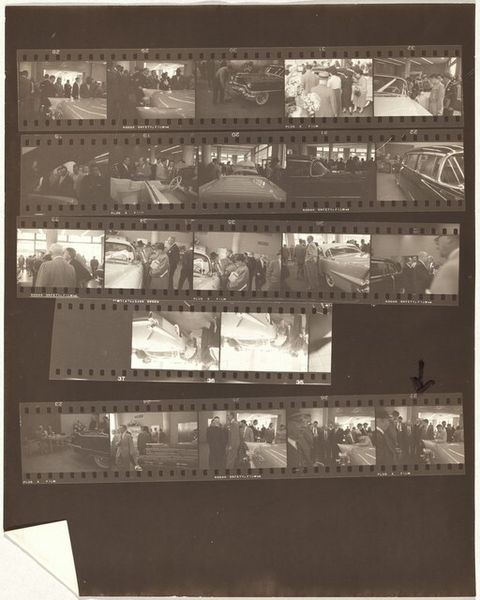
contact-print, photography, gelatin-silver-print
#
film photography
#
landscape
#
contact-print
#
street-photography
#
photography
#
gelatin-silver-print
#
cityscape
#
modernism
#
realism
Dimensions: sheet: 25.2 x 20.3 cm (9 15/16 x 8 in.)
Copyright: National Gallery of Art: CC0 1.0
Curator: Looking at this contact sheet, a gelatin silver print entitled "New York City no number," dating from around 1954, by Robert Frank, what jumps out at you? Editor: It's evocative... a raw, almost voyeuristic glimpse into mid-century urban life, wouldn’t you agree? Curator: Absolutely, Robert Frank's work from this period serves as a potent social commentary, challenging the idealized images of America propagated in the media. This contact sheet especially offers an intriguing, granular view into Frank’s process. Editor: Right, and immediately what strikes me is the contrast. Happiness juxtaposed with the banal. I wonder if it’s intentionally showing this divide as some sort of symbol. Is it social commentary, or is he just photographing what he sees? Curator: I would say it is both. His outsider perspective, heightened by his status as a Swiss immigrant, allowed him to capture scenes that revealed a sense of alienation and unease simmering beneath the surface of post-war prosperity. We should also address the history and significance of contact sheets. Editor: Definitely. They are never really considered “final art” until now, that is! Traditionally, a means to an end for photographers. Seeing it like this humanizes and renders less precious a photograph—reminding us there were dozens of options and permutations on the way to that “final” image we now see on its own. What statement is Frank making? Curator: Frank captured reality without romanticizing it; many considered this a direct assault to the glorified American Dream—unfiltered scenes from everyday life, including some pictures depicting societal inequalities. These were previously considered taboo. Editor: He’s capturing fleeting moments… building layers, like stanzas in a visual poem. It definitely transcends straightforward realism. You can sense that tension— the symbol is the entire photograph. Curator: The seemingly random sequencing speaks volumes. Ultimately this reinforces his intent to dismantle traditional narratives, presenting a fragmented, almost stream-of-consciousness depiction of the urban landscape. Editor: Indeed. Looking closely has given me an all new understanding and appreciation of both his creative process and perspective. Curator: It highlights photography’s complicated relationship with social responsibility, power, and its crucial role in constructing and deconstructing identities.
Comments
No comments
Be the first to comment and join the conversation on the ultimate creative platform.
